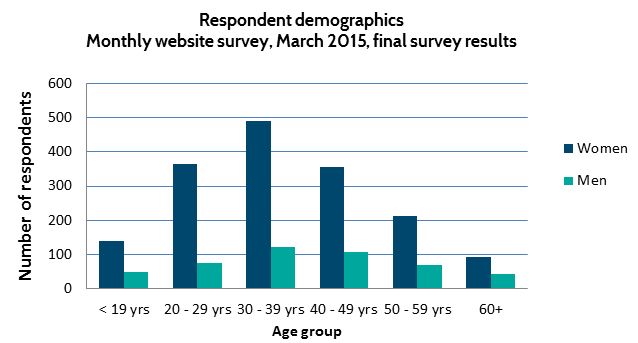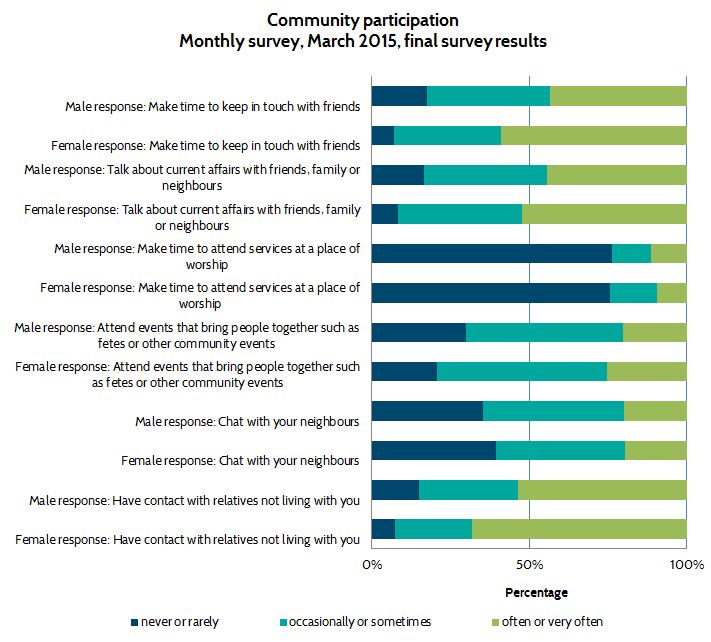It has long been known that economic and social participation are essential to the success and wellbeing of people, with high levels of participation linked to better physical and mental wellbeing. While people may choose to participate in many ways and at different levels, research suggests that regular involvement in certain activities are especially beneficial, in particular those pursuits that are characterised by personal involvement, initiative and effort.
Introduction
It has long been known that economic and social participation are essential to the success and wellbeing of people, with high levels of participation linked to better physical and mental wellbeing.
While people may choose to participate in many ways and at different levels, research suggests that regular involvement in certain activities are especially beneficial, in particular those pursuits that are characterised by personal involvement, initiative and effort.
The focus of Relationships Australia’s March online survey was to find out whether visitors to our website are active participators in a range of activities that have been found to be protective against the onset of physical and mental disorders. The community participation questions selected for the online survey were adapted from the Household Income and Labour Dynamics Survey of Australia following the study of Berry, Rodgers and Dear in 2007.
Previous research finds that…
- Community participation activities such as taking an active interest in current affairs; regularly socialising with household members, friends, extended family and neighbours; taking part in organised community activities; and religious observance have been associated with improved psychological wellbeing.
- In contrast, expressing opinions publicly and political protest are activities that have been associated with increased psychological distress.
- Community participation is a prerequisite for developing social capital, a widely recognised predictor of physical and mental health.
- Social capital is thought to positively affect health through improved health behaviour. Individuals who are embedded in a network or community rich in support, social trust, information, and norms, have resources that help them improve their health.
- Social capital also encourages social trust and membership. These factors can discourage individuals from engaging in risky health behaviours such as drug and alcohol abuse.
- People’s happiness has been found to depend on the happiness of others in their networks with whom they are connected. This effect can be observed for up to three degrees of separation, for example in the friends of one’s friends’ friends.
Survey Results Analysis
More than 2,160 people responded to the Relationships Australia online survey in March. Around four in five survey respondents (78%) identified as female, with more females than males responding in every age group (see figure below). Eighty five per cent of survey respondents were aged between 20‑59 years, and almost 40 per cent of respondents comprised women aged between 30-49 years (inclusive).
As for previous surveys, the demographic profile of survey respondents remains consistent with our experience of the groups of people that would be accessing the Relationships Australia website.

There were significant differences in the participation levels reported by men and women for the six activities identified by the survey questions (see figure below).
For example, almost seventy per cent of women (68%) and half of men (53%) reported that they often or very often had contact with relatives not living with them. Almost double the amount of men (15%) reported that they never or rarely had contact with relatives not living with them when compared to the reports of women survey respondents.
One-fifth of women and men reported they chatted with neighbours often or very often; however, forty per cent of women and thirty-five per cent of men reported that they never or rarely chatted with their neighbours. When asked whether they attend events that bring their community together like fetes, shows, festivals and community events, one-quarter of women (25%) and one-fifth (20%) of men reported they often or very often attended these events. However, around half of survey participants reported that they only occasionally attended these events.
Just over three-quarters (76%) of women and men reported that they never of rarely attended places of worship. In contrast, both women and men reported high levels of participation when asked about their discussions of current affairs. Just over 50 per cent of women (52%) and 40 per cent of men (44%) reported that they often or very often chatted with friends, family or neighbours about current affairs.
Similarly, survey respondents reported high levels of engagement with their friends. Almost sixty per cent (59%) of women and forty-five per cent of men (44%) reported that they often or very often made time to keep in touch with friends. However, just under one-fifth of male survey respondents indicated that they never or rarely made time to keep in touch with friends, similar to low levels of participation men reported for contact with relatives (15%).

References
Berry, H.L. & Shipley, M. (2009). Longing to belong: personal social capital and psychological distress in an Australian coastal region. Social Policy Research Paper No. 39. Canberra.
Berry, H.L., Rodgers, B. & Dear, K.B. G. (2007). Preliminary development and validation of an Australian community participation questionnaire: types of participation and associations with distress in a coastal community. Social Science & Medicine, vol. 64:1719-37.
Fowler, H. F. & Christakis, N. A. (2008). Dynanmic spread of happiness in a large social network: longitudinal analysis over 20 years in the Framingham Heart Study. BMJ, online first.
Lin, N. Building a network theory of social capital. In N. Lin, K. Cook, & R.S. Burt, (Eds.), Social capital: Theory and research, (pp.3-29). New York: Aldine de Gruyter.